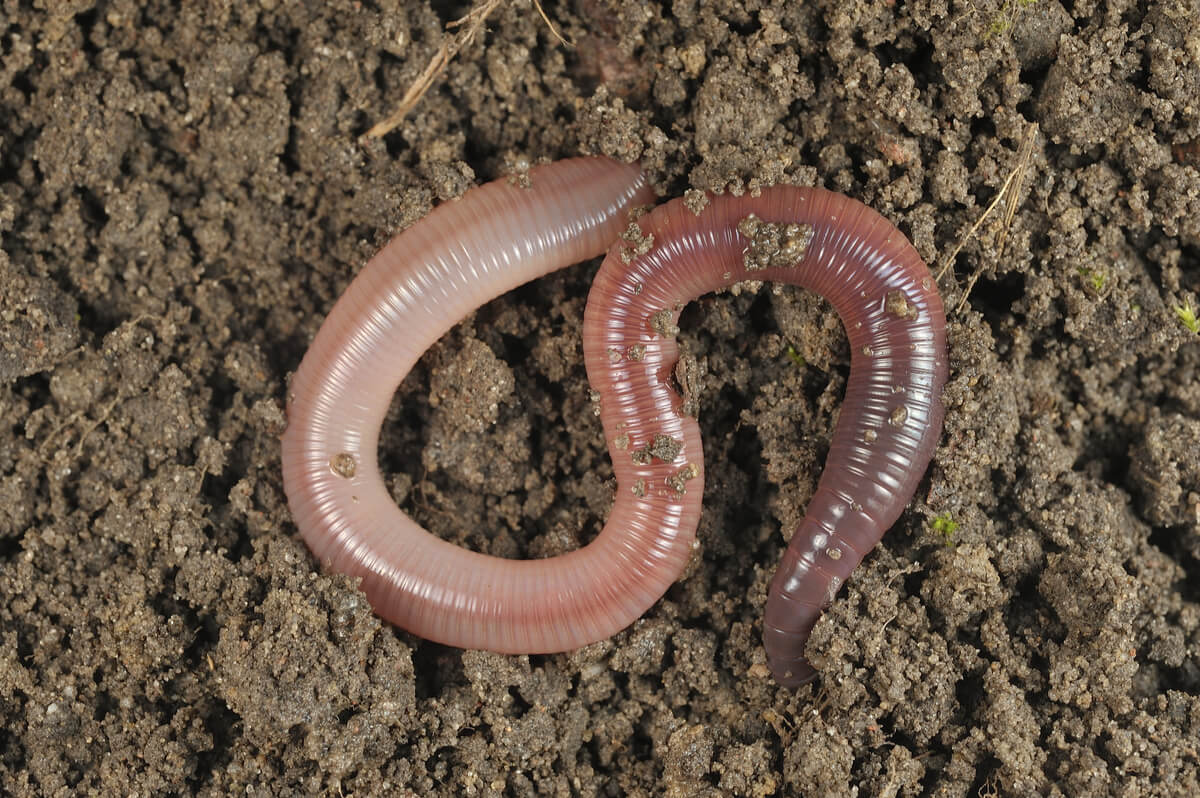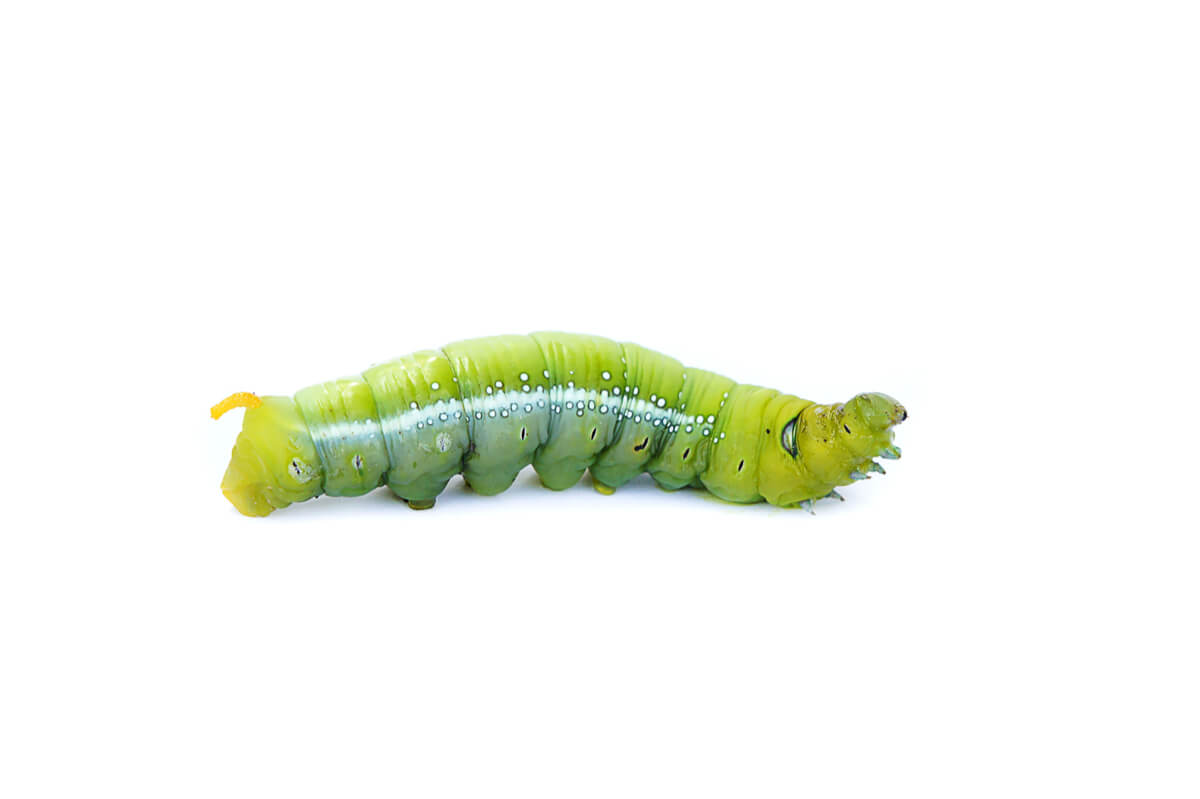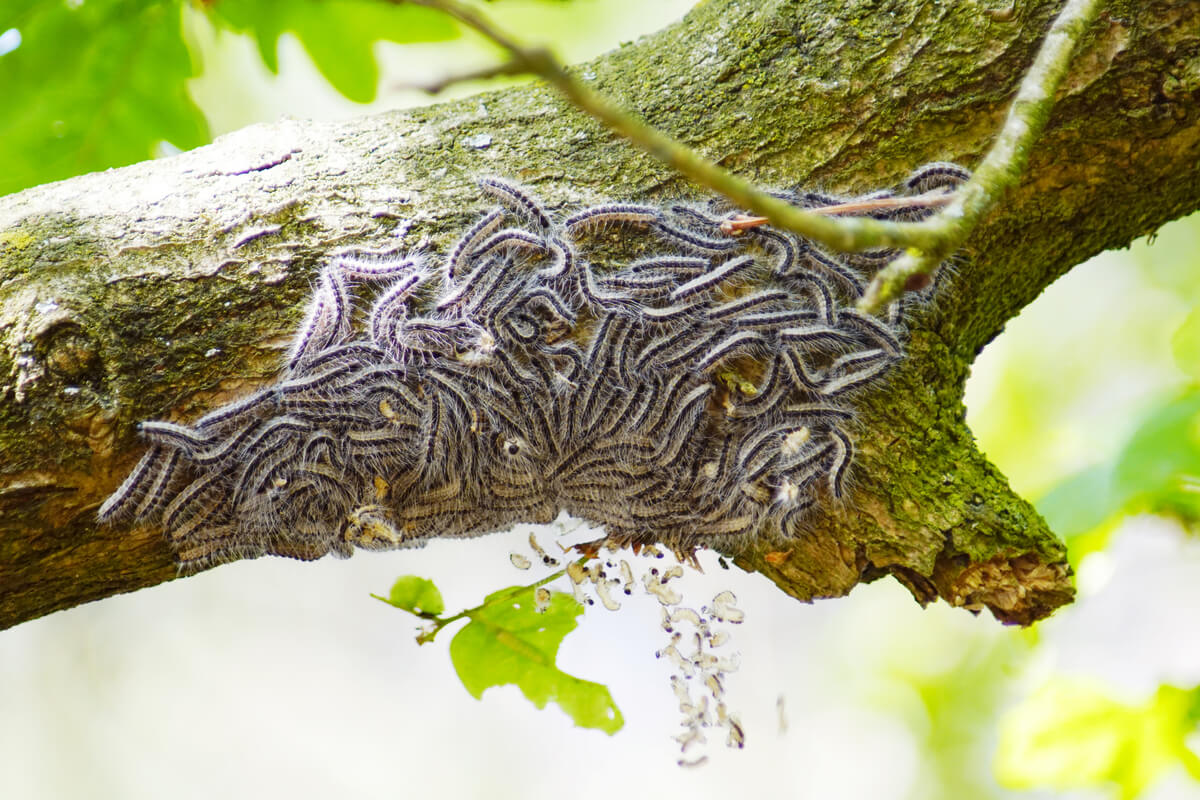Are Caterpillars Worms?


Written and verified by the biologist Samuel Sanchez
Are caterpillars worms? This question seems irrelevant at first, but the reality is that it can make the difference between a sticky encounter and a quick visit to the ER. Indeed, some caterpillars are poisonous and with their stinging hairs are capable of causing serious local reactions in humans. Can the same be said for worms?
Vermiform, wormy, elongated and many more adjectives refer to this immense group of invertebrates, all of them with cylindrical bodies that crawl along the seabed or terrestrial soils. How is a worm different from a caterpillar? In this article, we’ll bring you the answer based on scientific and genetic knowledge.
What are worms and caterpillars?
In the general population, the term “worm” refers to any elongated invertebrate with fossorial habits (living underground or on its surface). However, the taxonomic classification of living beings may not fully agree with this meaning. We’ll now explore each group separately.
Worms
According to the Oxford Languages Dictionary, a worm is any invertebrate animal with a flattened or cylindrical body, soft, elongated, contractile, and without any limbs. This designation has no taxonomic interest, as it encompasses a group of living beings that are very far apart at the genetic level.
The term “worm” comes from the word verm, coined by Carl Linnaeus and Jean-Baptiste Lamarck in the work Systema Naturae, first published in 1735. This now obsolete classification encompassed all vermiform or wormy invertebrates that weren’t arthropods, including slugs, nematodes, and many other living things.
To this day, the classification that concerns us here has been outlined a little more, but it’s still polyphyletic. This means that it includes thousands of species without any direct relationship, and therefore, it’s of no scientific interest. At a general level, the following groups of invertebrates are considered worms:
- Flatworms: These are a phylum of simple, bilateral and non-segmented invertebrates. They don’t have specific respiratory and circulatory organs, so they are considered “basal” in terms of evolution. Some are parasites and others free-living, but they’re associated with humid environments of salt or fresh water, although there are terrestrial species.
- Nematodes: unlike flatworms, nematodes have a tubular digestive system with openings at both ends (mouth and anus). Some of the more common human parasites (such as Ascaris and Anisakis) are found in this group.
- Annelids: Annelids are much more evolved animals than those already mentioned, since they have nervous, circulatory, digestive and even respiratory systems (sometimes in the form of gills). These invertebrates are segmented and can colonize both terrestrial and aquatic environments. The famous earthworms are in this group.
Beyond this classification, other authors argue that onychophorans, priapulids and even insect larvae could be grouped under the umbrella of “worms”. In any case, it can be said that the norm is what is cited in the list.

Caterpillars
The term “caterpillar” implies far fewer headaches, as it only refers to all the larvae of insects of the order Lepidoptera. Put even more simply, every larval stage of a butterfly or moth is a caterpillar, regardless of its shape and size.
All these insects fulfill a common body plan: they’re divided into segments, have 6 legs (plus the fleshy pseudo-legs of the abdomen) and breathe through a tracheal system, which communicates with the outside through the spiracles. The first 3 segments after the head form the thorax, while the next 10 represent the abdominal region.
Many caterpillars adopt colors similar to those of the environment to blend in with them (crypsis). On the other hand, others have much more striking tones to deter their prey, something known as aposematism. In addition, some species have hairs with stinging or toxic chemical compounds as a definitive defense method.
Caterpillars are wormy-shaped, but according to classifications, they wouldn’t strictly be worms.

Are caterpillars worms?
Now that you know the basic information about both terms, we’ll go back to the question we initially posed: are caterpillars worms? While it’s true that the term “worm” can encompass all living vermiform beings, in a more strict sense it could be said that it doesn’t. A caterpillar is neither a flatworm, nor an annelid nor a nematode, but a lepidopteran insect.
Perhaps the closest thing on this list to butterfly larvae are terrestrial annelids, better known as “worms.” In any case, you must remember that annelids don’t have any legs as such (some species have parapodia or extensions, but they aren’t legs) while caterpillars do have 6 well-defined limbs in the thoracic segments.
In addition to this difference, it is also necessary to emphasize that earthworms are generalists and detritivorous creatures, while caterpillars live on the leaves of plants and feed exclusively on plant matter (with few exceptions). While one group has specialized in herbivory, another is responsible for decomposing organic matter.
Caterpillars are vermiform invertebrates, but they don’t have to be conceived as worms for this reason. They aren’t annelids, flatworms or nematodes.

Final thoughts
Ultimately, it should be noted that if you hear someone refer to caterpillars as worms, they wouldn’t be entirely wrong either. As we have said, this last group is polyphyletic, and, therefore, all vermiform living beings can enter it. It isn’t the most correct, but in its broadest sense, we can accept it.
If one thing is clear to us after delving into the world of invertebrate taxonomy, it is that the terms used by the general population are of little use in the scientific world. When it comes to designating species and constructing genera, families and orders, the only thing that matters is the genetic relationship of the members, regardless of their external shape or appearance.
All cited sources were thoroughly reviewed by our team to ensure their quality, reliability, currency, and validity. The bibliography of this article was considered reliable and of academic or scientific accuracy.
- Mora, C., Tittensor, D. P., Adl, S., Simpson, A. G., & Worm, B. (2011). How many species are there on Earth and in the ocean?. PLoS biology, 9(8), e1001127.
- Thollesson, M., & Norenburg, J. L. (2003). Ribbon worm relationships: a phylogeny of the phylum Nemertea. Proceedings of the Royal Society of London. Series B: Biological Sciences, 270(1513), 407-415.
- De Ley, P. (2000). Lost in worm space: phylogeny and morphology as road maps to nematode diversity. Nematology, 2(1), 9-16.
- Greene, E. (1989). A diet-induced developmental polymorphism in a caterpillar. Science, 243(4891), 643-646.
This text is provided for informational purposes only and does not replace consultation with a professional. If in doubt, consult your specialist.